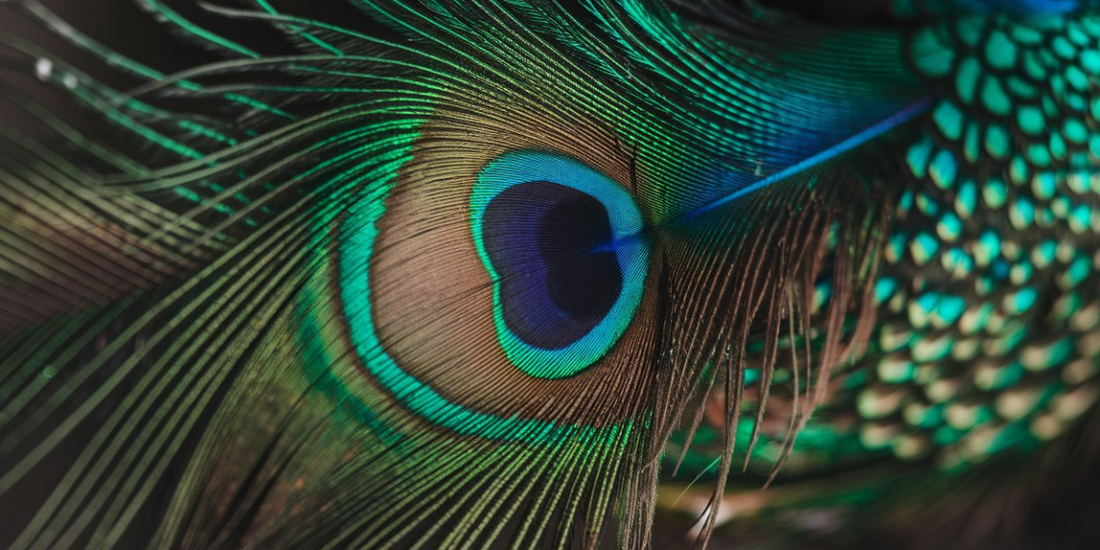Amazing Peacock Facts

Share
The Fascinating History of The Peacock
Peacocks have a long and noble history. The most well-known species, the Indian Peafowl (Pavo cristatus), is native to India, Sri Lanka, and parts of Southeast Asia. Fossil records suggest that peacocks have existed for over 8 million years, making them one of the oldest surviving bird species.
Peacocks in Royalty and Mythology
Since ancient times, peacocks have been seen as symbols of power, immortality, and divinity. In Hindu culture, they are associated with the god Krishna, who is often depicted wearing a peacock feather in his crown. The peacock is also the national bird of India.
In Greek mythology, peacocks were sacred to the goddess Hera (Juno in Roman mythology). Legend says that the "eyes" on a peacock's tail were placed there by Hera after she transformed her faithful servant Argus, who had 100 eyes, into the bird’s plumage.
In Chinese culture, peacocks symbolize prosperity and beauty** and were often featured in the palaces of emperors.
In Persian and Middle Eastern folklore, peacocks were seen as guardians of paradise, and their feathers were thought to bring good luck and protection from evil.
Do Peacocks Mate for Life?
Unlike swans or eagles, peacocks do not mate for life. Instead, they are polygamous, meaning that a single male will mate with multiple females during the breeding season. The male performs an elaborate courtship display, spreading his tail feathers and shaking them while making loud calls to attract peahens.
The more vibrant and symmetrical the male’s tail, the more likely he is to impress a mate. However, once mating occurs, the male does not take part in raising the offspring
Peacock Chicks: The Next Generation
Once a peahen selects a mate, she lays three to six eggs in a shallow nest on the ground. The eggs take about 28 days to hatch, and the mother alone raises the chicks, also known as peachicks.
Peachicks are born covered in soft, brownish feathers and can walk within a few hours of hatching. While they don’t have the vibrant colours of their parents, male chicks will start to develop their characteristic plumage after about six months, though it can take up to three years for them to grow a full train of tail feathers.
Can Peacocks Fly?
Despite their long tails, peacocks are capable of flight—but only for short distances. They usually take to the air to escape predators or to find a high spot to sleep in at night. Watching a peacock fly is both awkward and incredible!
Why Do Peacocks Scream So Loudly?
Ever heard a loud, piercing call in the middle of the night? It might have been a peacock!
Peacocks have one of the loudest calls in the bird world, which can be heard up to 5 miles (8 km) away. Some scientists believe their calls are used to attract mates, while others think it’s a built-in predator alarm system.
Either way, if you live near a peacock, prepare for some noise!
Do Peacocks Actually Have Blue and Green Feathers? (Hint: It’s an Optical Illusion!)
Peacocks appear to shimmer in brilliant blues and greens, but their feathers contain no actual colour pigment!
Instead, their feathers have microscopic structures that manipulate light, creating an effect known as structural coloration—the same phenomenon seen in butterfly wings. This natural trickery gives them their dazzling, ever-changing appearance.
Shop Now - Elevate Your Space with This Stunning Peacock Print:
 This exclusive peacock wall art print is designed to capture the bird’s striking elegance and vibrant energy, making it a powerful statement piece in any home or office. Whether you want to add a touch of luxury or embrace the symbolic meaning of the peacock, this print will transform your space.
This exclusive peacock wall art print is designed to capture the bird’s striking elegance and vibrant energy, making it a powerful statement piece in any home or office. Whether you want to add a touch of luxury or embrace the symbolic meaning of the peacock, this print will transform your space.
